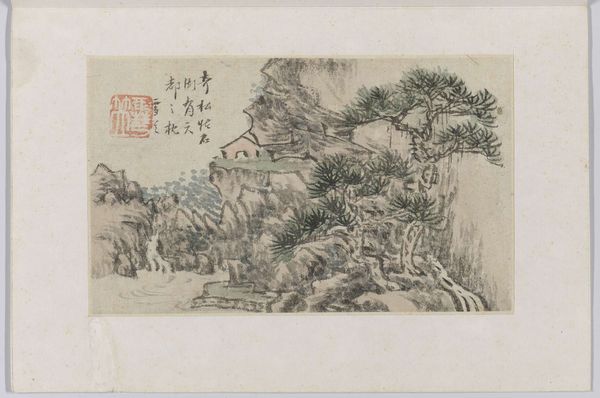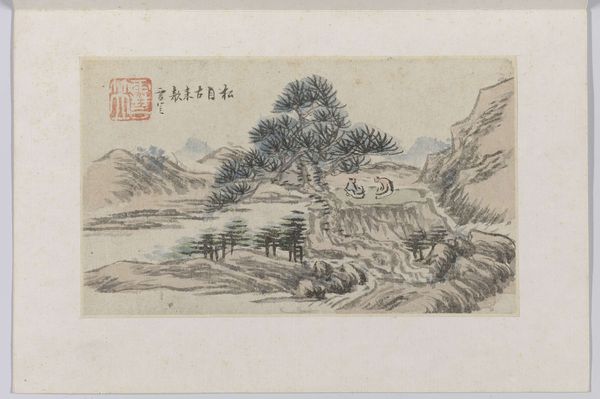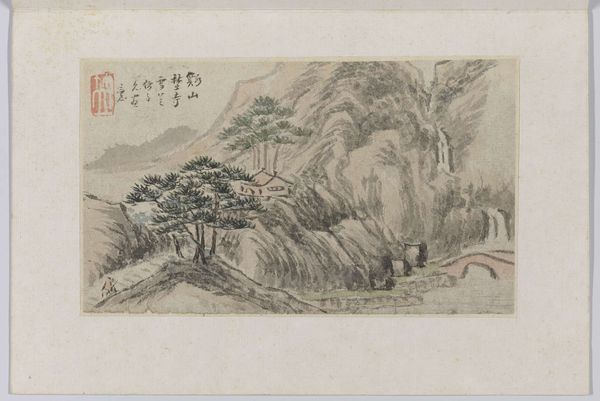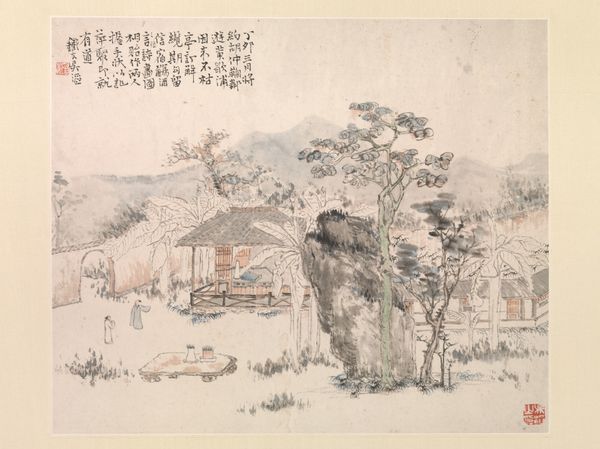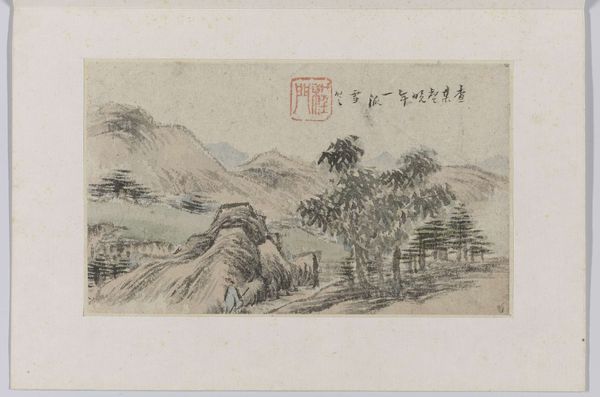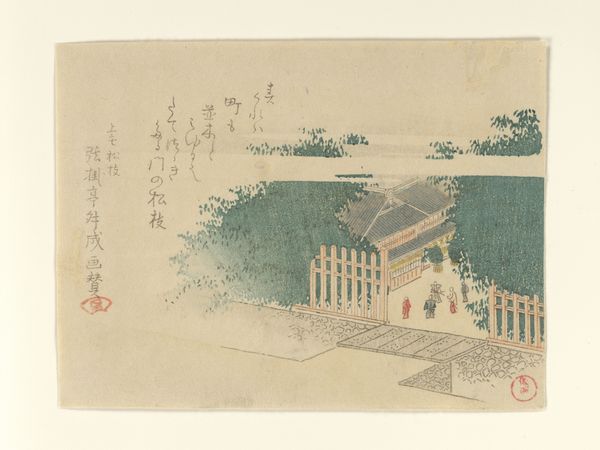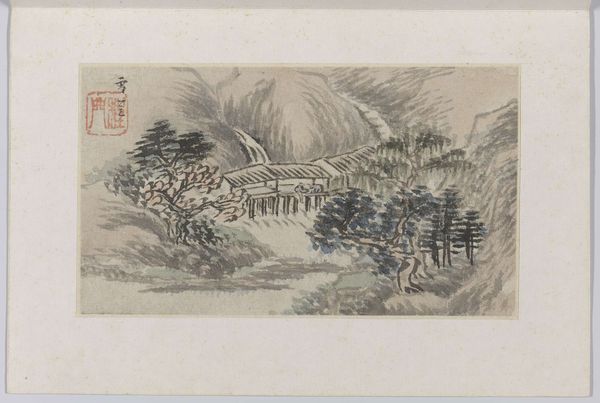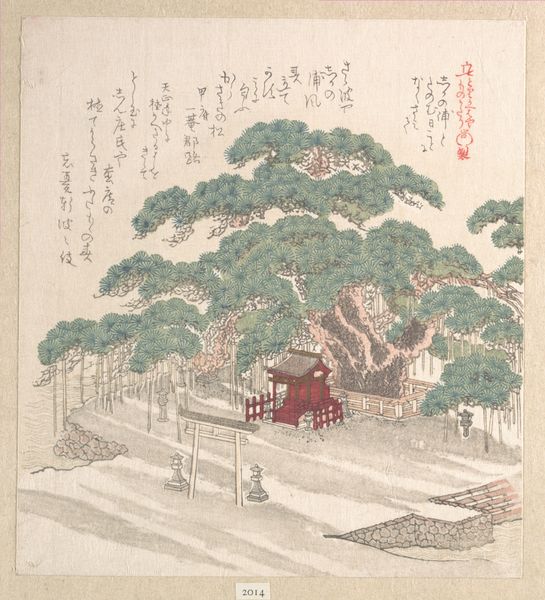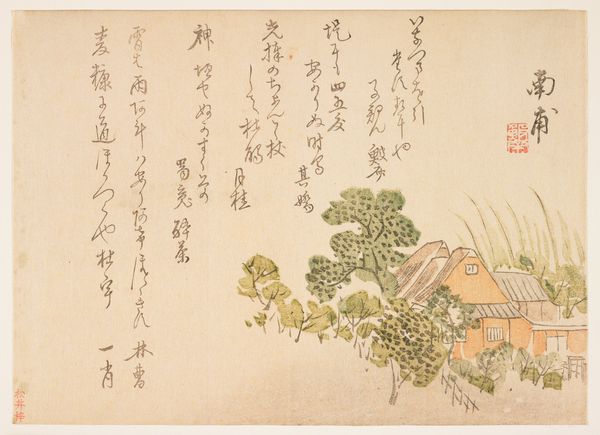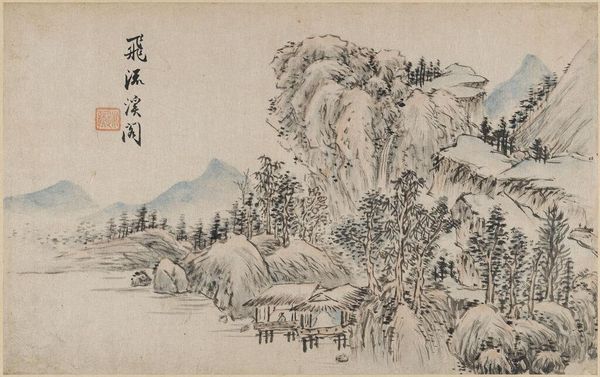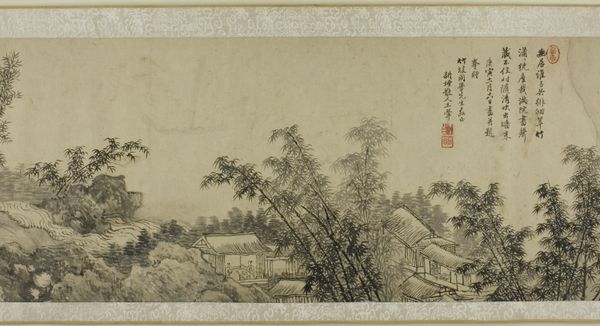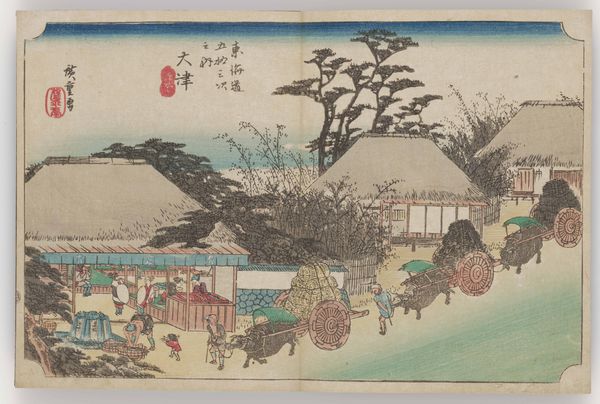
paper, watercolor, ink
#
asian-art
#
landscape
#
figuration
#
paper
#
watercolor
#
ink
#
coloured pencil
#
watercolor
Dimensions: height 24 cm, width 20 cm
Copyright: Rijks Museum: Open Domain
Curator: I'm immediately drawn to the feeling of serenity in this piece, "Landschap," likely created sometime between 1850 and 1900 by Cheng Men. It feels almost dreamlike, doesn't it? Editor: Dreamlike is a good word for it. But let's think about the 'stuff' that makes that happen. The piece seems deceptively simple but really emphasizes technique with materials, using paper, ink, and watercolor—a real contrast of delicate and deliberate mark-making. I’m intrigued by the means of production here. Curator: Absolutely. The watercolor lends itself to that ephemeral quality, a transience reminiscent of memory itself. See how the ink outlines give definition to the architecture but bleed ever so slightly? I feel the passage of time embedded right there. Editor: And that architecture–it's not just buildings, is it? It is, essentially, infrastructure—constructed by labor, meant for something beyond pure aesthetics. Those simple forms point to resource allocation. There's something to be said about a culture making 'home' a symbol of both retreat and material provision. Curator: I think you're on to something profound. Retreat, definitely, in the classic Asian-art style, offering solace amidst figuration. But also connection. That lone figure crossing what I take to be a rudimentary bridge seems to emphasize this connection to—and gentle dominance over—the land. What raw materials were readily available? How did they inform daily life? It whispers such stories. Editor: Yes! And what about the status of these art-making materials? Paper, ink… their very accessibility allowed more people to express connections to landscapes, domestic space, the idea of *home*. Who made the paper, though? Were these hand ground inks? It starts us thinking about access. Curator: Fascinating—access on all fronts, isn't it? Looking closely at those washes of color—dare I say, almost meditative in application. Do you notice how the trees frame the scene, lending a sense of enclosure, perhaps reflecting an intimate, interior world? Editor: Precisely, but I would argue they control it; framing isn’t innocent. A tree felled and processed gives shelter, but its selection from the land is about controlling our environment in ways that can be equally damaging. Curator: A provocative point, and certainly one to consider as we continue to reflect on this quiet, deceptively complex, work of art. Editor: It’s made me think a lot about value, of how even the simplest materials have complex and consequential stories.
Comments
No comments
Be the first to comment and join the conversation on the ultimate creative platform.

